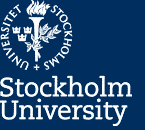I fully agree that the whole system is unreasonable. But the reason for the fee amount is not that higher education institutions try to grab money from fee paying third-country students or from Sweden’s development aid budget. Every activity at a higher education institution in Sweden must bear its own costs, it is a principle that we all must follow. If we want to attract students from outside of the European Union, the European Economic Area and Switzerland, the tuition fees must cover the costs of administration as well as marketing. The latter sounds bad and commercial – but when a popular and free system without much ado is replaced by tuition fees, some kind of international marketing is needed in order to not lose all students. The real problem is that the tuition fee system originally was introduced, in 2011, without any analysis of the consequences and without setting up any scholarship programmes that could compensate for the inevitable decline in the number of students.
Now there is going to be an investigation, perhaps resulting in a more uniform set of national rules and regulations. That is good, of course, but it should have been done from the beginning. However, it does not solve the main problem, and if the directive of the investigation only is to revise the pricing the investigation risks missing the point. The Swedish National Union of Students has, since the very start of tuition fees, strongly and consistently insisted that all education and all compulsory course components in Swedish higher education should be free for all students, regardless of nationality, which Stockholm University on numerous occasions has agreed with. That is a fundamental principle that should be a matter very close to the heart of the Swedish Social Democrats, currently governing our country.
If the Government today for some reason still would find it impossible to back down from the fee reform of the previous Government, an extensive scholarship programme is the only sensible option. On one hand stigmatizing the fee setting of the higher education institutions, that certainly can be criticized but was created in a situation where there was a risk of losing all non-European students, and on the other hand claiming the need for strongly increased efforts to make the higher education institutions raise their internationalization regarding education – where we at Stockholm University were already well advanced before the reform – is to create a Catch-22 for universities. The equation simply does not add up, and we cannot afford that to happen. Not only our higher education institutions, but Sweden as a nation, need more qualified international students.


